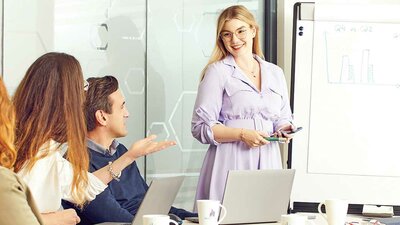Advancing for the Environment
To address climate change, it is time, more than ever, to take actions. At Air Liquide, we have the scale, the technologies and the know-how to make a real impact and offer more sustainable options where they are most needed. We are also taking actions to manage water sustainability and preserving biodiversity. We work on the front line of environmental progress, ready to play a decisive role in the transition to a low-carbon society. This is one of the biggest challenges the world is facing which requires the collective efforts of all stakeholders.
Reducing CO2 emissions
In 2018, Air Liquide committed to a 30% reduction of its carbon intensity1 by 2025. While confirming this commitment, the Group has set more ambitious goals to abate CO2 emissions in 2021.
-33% carbon emissions by 2035
Air Liquide commits to decreasing its CO2 emissions in absolute value by 33%2 by 2035. This includes direct emissions from its production and cogeneration units, as well as indirect emissions from the production of electricity and steam purchased by the Group for its operations.
Carbon neutrality across the entire value chain by 2050
Air Liquide commits to reaching carbon neutrality by 2050, aligning the Group with international efforts to reduce global warming, as outlined in the Paris Agreement. This means significantly increasing the use of low-carbon electricity for operations, implementing innovative carbon capture technologies, optimizing supply chains and improving the efficiency of our production units.
Developing low-carbon solutions for our customers and for industries
We're not only reducing our carbon footprint but also helping industrial customers do the same. By leveraging our technological expertise and our capacity for innovation, we're inventing sustainable solutions to reduce their emissions.
Committing to biodiversity preservation
The Group has taken a commitment to reinforce biodiversity assessment criteria into the investment process for all new projects by 2024 and to develop and implement an aggregated biodiversity indicator by 2025.
Preserving water
The protection of all natural resources is an integral part of Air Liquide’s commitment to sustainable development. Water is essential for life on earth and is also a highly important resource for many industrial sectors. As water scarcity grows with risks to access to clean water, Air Liquide aims to improve its water management throughout the world. To do so, the Group has taken a commitment to implement a water management plan by 2025 for high water use sites in high water stress areas and to define a Group standard for all operations related to the quality of discharged water.
Accelerating in hydrogen
Hydrogen is a cornerstone of the energy transition. It offers a tremendous growth potential as a low-carbon solution for many applications in the industrial, energy and mobility sectors. Convinced that hydrogen will play a major role in the energy transition, the Group intends to be a key enabler of the hydrogen society thanks to its assets, technology and expertise.
2. From 2020 Market-based emissions of 32.5 million tonnes CO2 eq (scopes 1 and 2).
3. Other indirect emissions related to the life cycle of products sold by Air Liquide. The GHG protocol accounting standards categorize emissions between Scope 1 (direct emissions from the company activities), Scope 2 (indirect emissions from the purchase and use of electricity, steam, heating and cooling) and Scope 3 (other indirect emissions that occur upstream and downstream in the organization's value chain).













